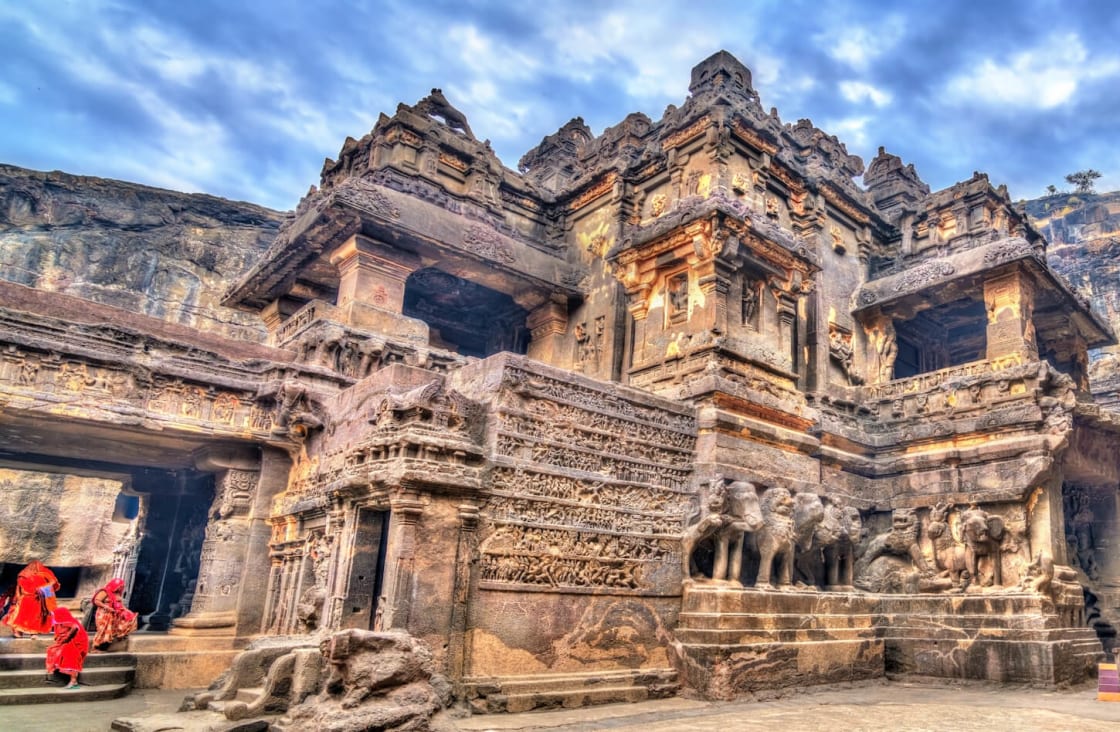
With more than 30,000 years of history, and the birthplace of numerous cultures and religions, India is an incredible destination with more than a thousand tourist attractions including several World Heritage Sites.
From the magnificent Taj Mahal in Agra to the Golden Temple in Amritsar, India is home to a trove of spiritual, cultural, and historical treasures too numerous to see in one visit. So to help you discover this vibrant land of startling contrasts and spectacular sights, our experts have created a shortlist for you.
If you’re wondering what to see in India, here is a top 10 list of tourist attractions in India not to be missed on your vacation.

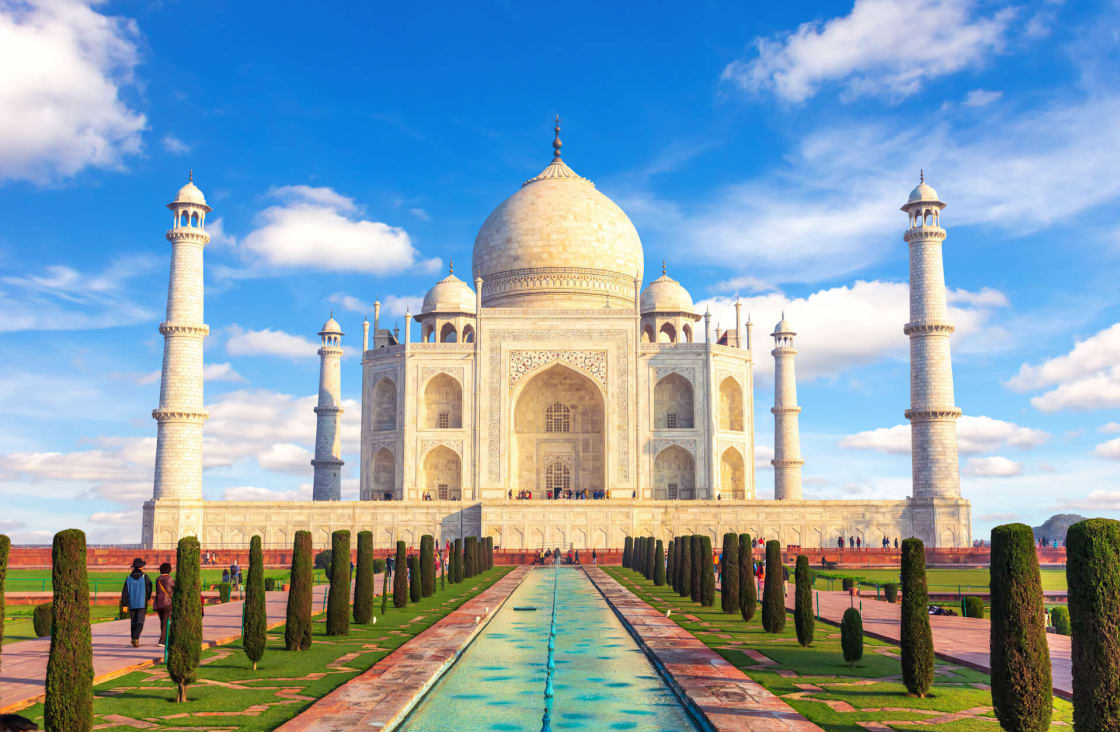
The Taj Mahal, one of the new Seven Wonders of the World, is a must-see on any India itinerary.
There are few sights in the world as iconic as the Taj Mahal, which is a must-see on most India itineraries, particularly for travelers on the famous Golden Triangle circuit, linking Delhi, Agra, and Jaipur. A testament to the power of an emperor’s love, this astonishingly beautiful mausoleum was named after Mumtaz Mahal, who was the favorite wife of Shah Jahan.
Construction began upon her death in 1631, and it took 20,000 of the most skilled craftsmen in the Mughal empire 17 years to complete. The queen consort was interred inside in a private chamber at the heart of the monument and Shah Jahan was later buried alongside his wife when he died in 1666. Incorporating many elements of Islamic design including an onion-shaped dome, arches, towering minarets and filigree marble screens, the Taj shows perfect bilateral symmetry along an axis running through the center of the main dome and the surrounding gardens.
While it shines brilliant white from a distance, up close the Taj is adorned with an elegant tracery of scrollwork, leaves, flowers and Islamic motifs, executed in marble. This is enhanced by black calligraphy inlaid around the entrance, and delicate inlaid floral patterns using precious and semi-precious stones such as jasper, lapis lazuli, carnelian, malachite, jade and mother of pearl.
The best time to visit is either at dawn or dusk when the atmosphere is brilliantly altered by the change in lighting. You can view the Taj Mahal by moonlight on five nights of every month, the night of the full moon and the two nights on either side of the full moon.
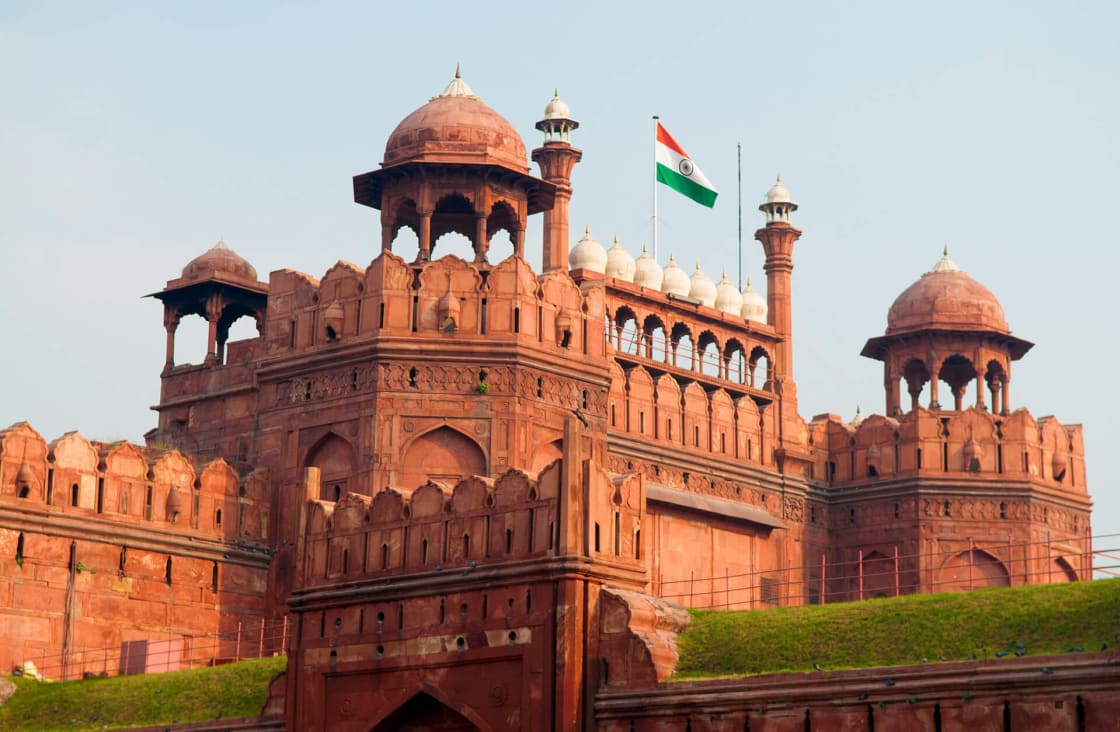
The foundations of Delhi’s Red Fort is rumoured to have had the decapitated bodies of prisoners built into them for good luck.
New Delhi’s colossal, crescent-shaped Red Fort, named after the stunning red sandstone that was used in its construction, was built by Shah Jahan in 1648. Also called Lal Qalʿah, it was home to emperors of the formidable Mughal dynasty for almost 200 years, until 1857 when the British took over. It covers a vast area of 254.67 acres ringed by one and a half miles of defensive walls, enclosing a complex of palaces and entertainment halls, projecting balconies, baths and indoor canals, and geometrical gardens, as well as an ornate mosque.
The two most famous structures of the fort complex are the Hall of Public Audience and the Hall of Private Audience. The former boasting 60 red sandstone pillars supporting a flat roof, and the latter, which is smaller, notable for its pavilion of white marble. Turrets and bastions vary in height from 59 ft on the river side to 108 feet on the city side.
It took ten years to construct and is rumoured to have had the decapitated bodies of prisoners built into the foundations for good luck. Be sure not to miss its two largest gates: the impressive Lahore Gate, the fort’s main entrance, and the elaborately decorated Delhi Gate, which was once used by the emperor for ceremonial processions. A sound and light show is held in the evenings, featuring important events in the fort’s history.
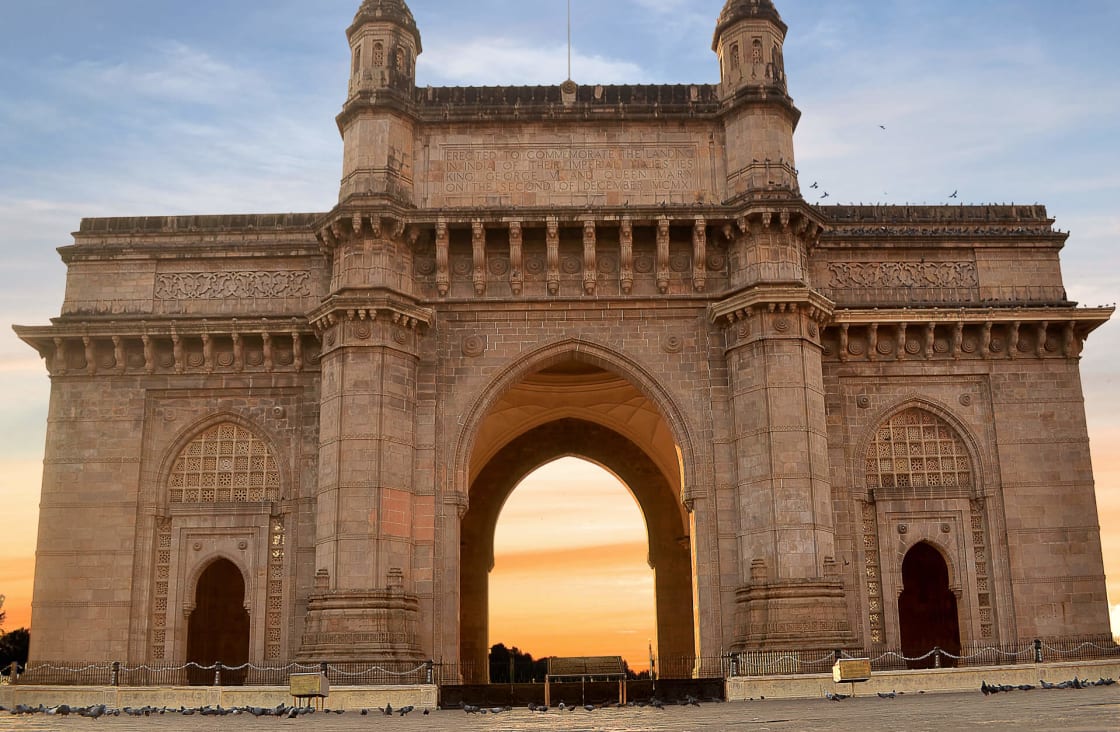
The iconic Gateway of India – often called the ‘Taj Mahal of Mumbai’ – impressively welcomes those visitors arriving to Mumbai by sea.
Standing an impressive 85 feet tall and located on the waterfront at Mumbai Harbour on the tip of Apollo Bunder, overlooking the Arabian Sea, the iconic Gateway of India is a bold yellow basalt arch of colonial triumph and a must-see when in Mumbai. Incorporating Islamic styles of 16th-century Gujarat, it was built to commemorate the arrival of King George V and his wife Queen Mary in 1911 and was opened with much pomp and ceremony in 1924. It was, for a while, the tallest structure in the city.
The Gateway of India was also the setting of a far less triumphant procession of British soldiers in 1948 when India obtained its independence. Notable for its stunning Indo-Saracenic design, a style of architecture that was introduced by the British during their rule in India, it combines diverse elements of the Hindu and Muslim architecture with Gothic cusped arches, domes, spires, tracery, minarets and stained glass, in a uniquely playful style.
This huge archway provides a spectacular backdrop that is as popular among locals as it is tourists. The first structure to welcome visitors entering the city by sea, it is popularly called the ‘Taj Mahal of Mumbai’ and is one of the top tourist attractions in India.
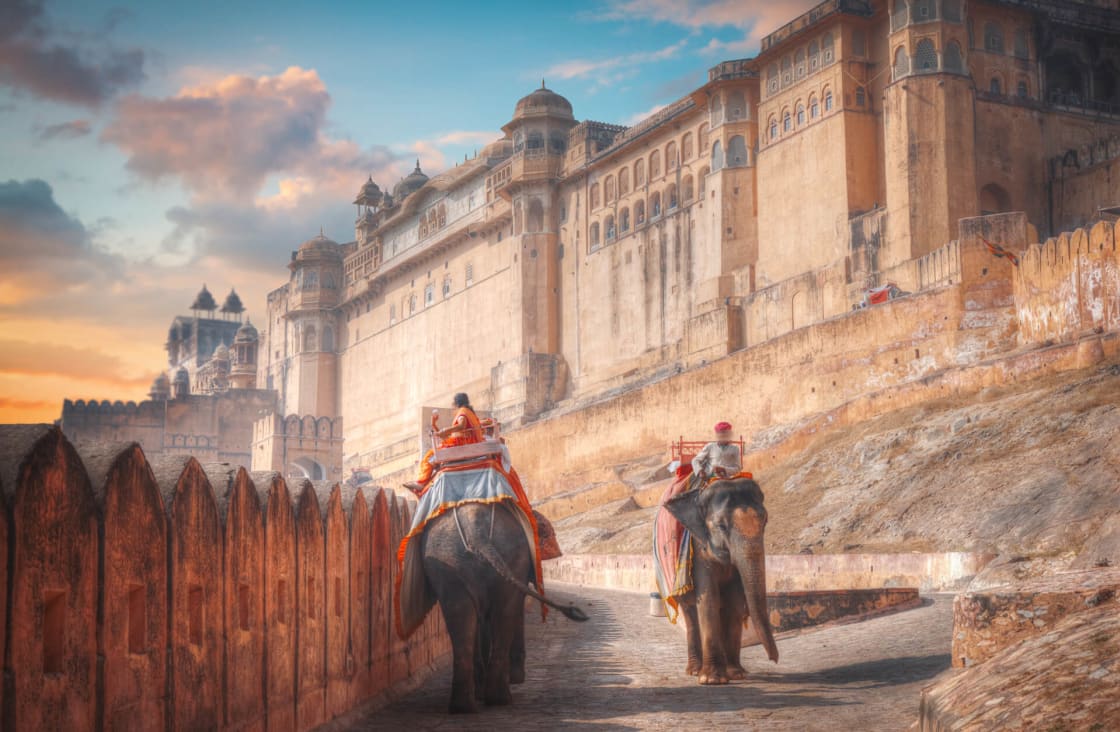
Amer was once the capital of Jaipur state, and its fort was the royal residence of its Rajput rulers.
Amber Palace or Amber Fort, also spelt Amer, was built as a fortified palace in 1592 by Maharaja Man Singh I and has long served as the capital of Jaipur. Carved high up into the hillside, the fort is accessible on foot via a steep climb from the town below. You will enter Amber Fort through the Sun Gate (Suraj Pol), which leads to the Jaleb Chowk, the first courtyard, with its many decorated elephants, and the Shila Devi Temple, dedicated to the goddess of war.
The adjoining Hall of Public Audience (Diwan-i-Am) features finely decorated walls and terraces frequented by monkeys, while the Hall of Pleasure (Sukh Niwas) is notable for its ivory-inlaid sandalwood door, its many flowerbeds, and a channel once used to transport cooling water.
The Temple of Victory (Jai Mandir) is characterized by many decorative panels and a multi-mirrored ceiling. From here, you can enjoy fine views from the palace ramparts over the picturesque Maota Lake below. The zenana (secluded women’s quarters) surrounds the fourth courtyard. The rooms were designed so that the maharaja could embark on his nocturnal visits to his wives’ and concubines’ respective chambers without the others knowing, as the chambers are independent but open onto a common corridor.
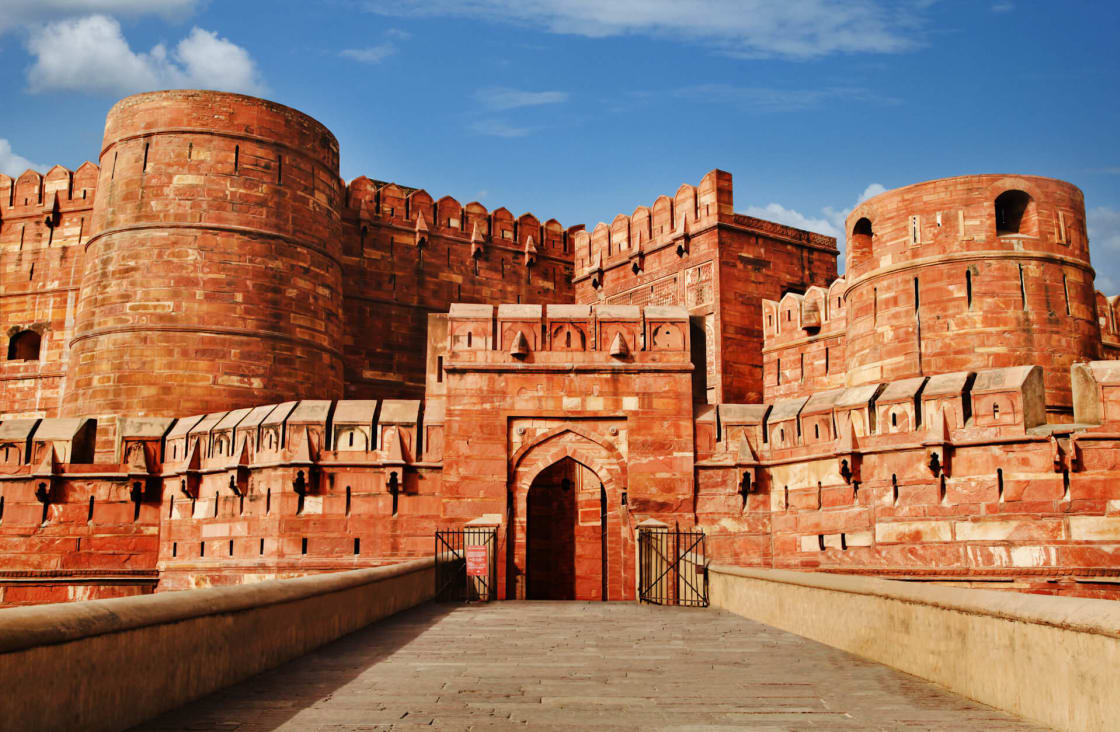
Don’t forget that Agra isn’t just home to the Taj Mahal – the Red Fort is also well worth a visit.
With the Taj Mahal located so close by, it is easy to forget that Agra has one of the finest Mughal forts in India. Built as a military structure in 1565 by Emperor Akbar with later additions by Shah Jahan, Agra’s Red Fort is an interesting mix of both Hindu and Muslim influences. The fort is entered through Amar Singh Gate with its low outer wall and dogleg design built to confuse attackers, and you can expect to be truly amazed as you walk through courtyard after courtyard of this palatial red-sandstone and marble fortress.
Once inside, you’ll see two large, interlinked sandstone buildings, Akbari Mahal and Jahangiri Mahal, the largest private residence in the complex. Other highlights include the Khas Mahal (Private Palace), with its splendid copper roof, and the Anguri Bagh (Grape Garden), a jigsaw-patterned Mughal garden with numerous wonderful fountains and water channels as well as screens that once offered a private area for the emperor and his entourage. Also of note is the octagonal Musamman Burj tower, which later served as Shah Jahan’s prison until his death.
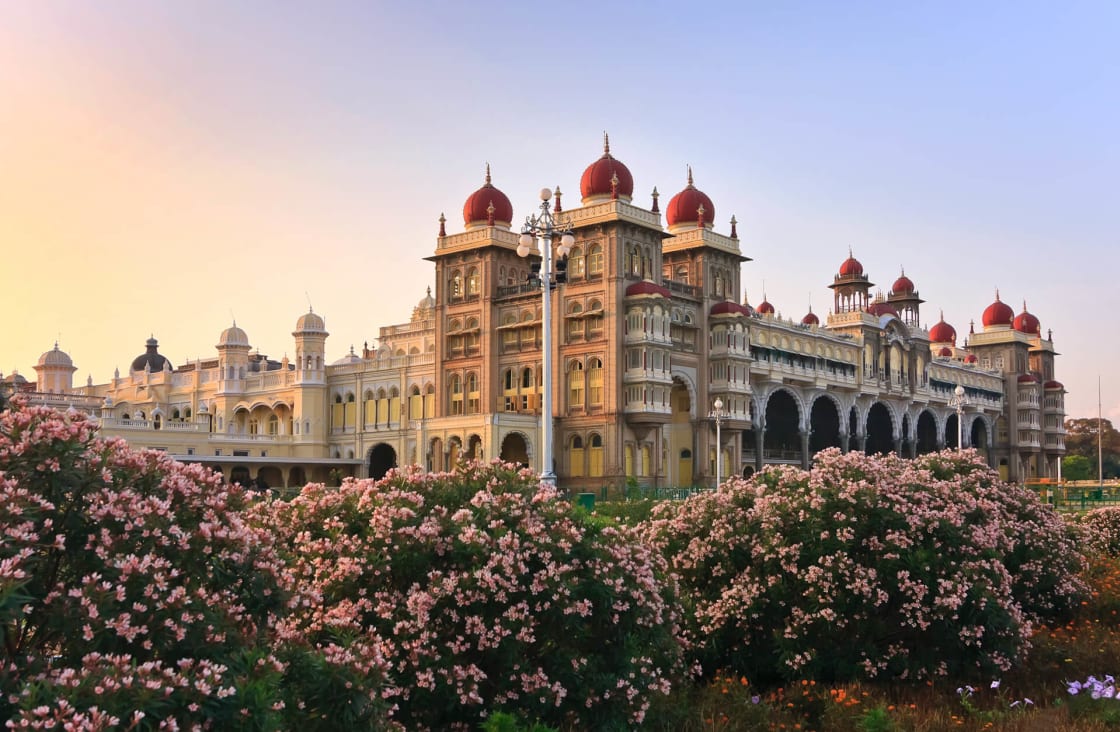
An eyesore it isn’t, the Mysore Palace is nothing short of spectacular and is in fact a complex of seven palaces.
The seven palaces that make up the Mysore Palace complex are nothing short of spectacular. The Wodeyars ruled Mysore from 1399 to 1950. The original palace was built of wood in 1399, and was burnt down in 1897, during the wedding of Jayalakshammanni, the eldest daughter of Chamaraja Wodeyar, and was rebuilt in 1912 in Indo-Saracenic style, blending together Hindu, Muslim, Rajput, and Gothic styles of architecture.
It is a three-storied stone structure, with deep pink marble domes and a 145 ft five-storied ivory tower. An imposing sculpture of Gajalakshmi with her elephants sits above the central arch, she is the goddess of wealth, prosperity, good luck, and abundance. The palace is surrounded by a large garden and hosts an annual arts and culture festival.
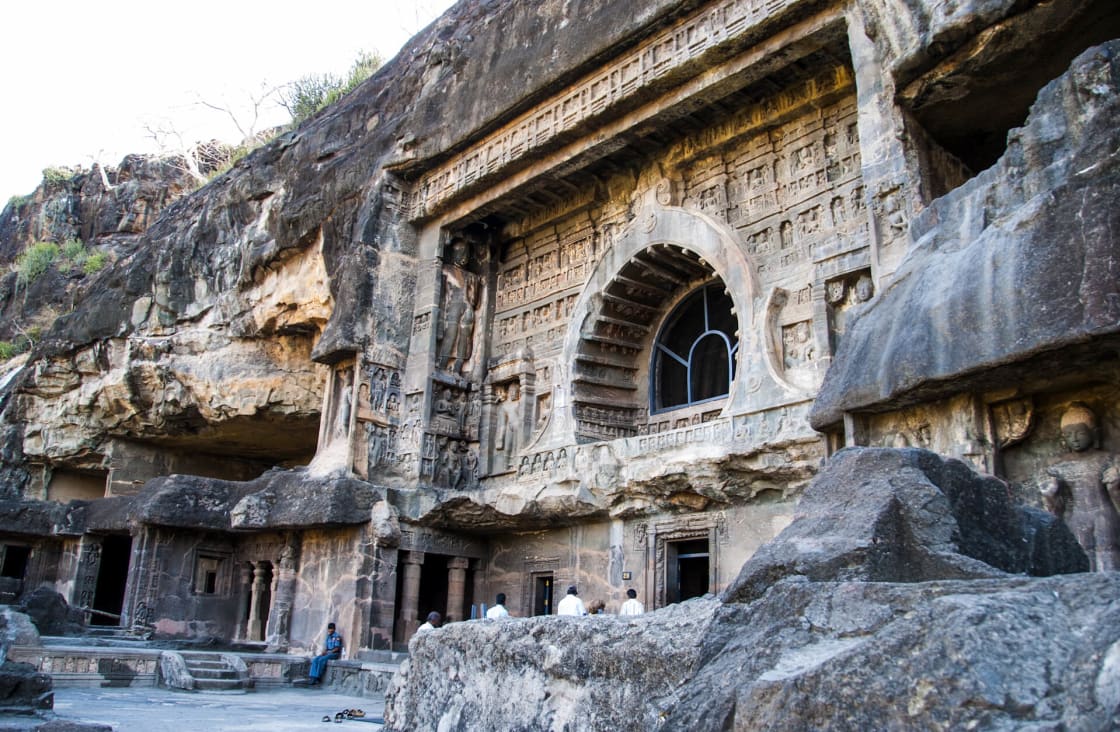
The Ajanta Caves contain some of the world’s foremost masterpieces of Buddhist religious art – paintings and sculptures some 2000 years old, remarkably preserved.
The magnificent Ajanta Caves are rock-cut cave monuments excavated out of a vertical cliff above the left bank of the River Waghora in the hills of Ajanta in the Aurangabad district of India’s Maharashtra state. They are thirty in number, including the unfinished ones, connected with the river by rock-cut staircases. Dating from the 2nd century BCE to about 480 CE, they were abandoned around 650 AD and forgotten until 1819, when a British hunting party stumbled upon them.
Their isolation contributed to the fine state of preservation in which some of their paintings remain to this day. The well-preserved murals depict everything from battlefields to sailing ships, city streets and teeming animal-filled forests to snow-capped mountains. The gateway to the Ajanta Caves and the equally spectacular Ellora Caves, is the city of Aurangabad.
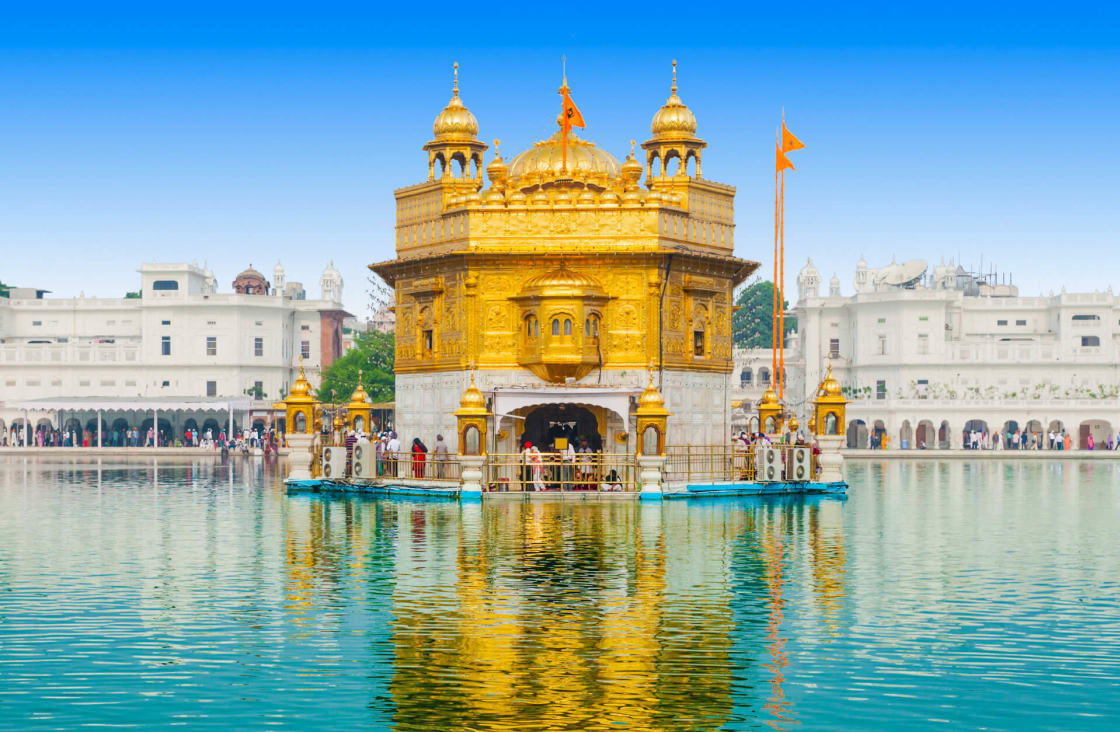
The Golden Temple ‘hovers’ in the middle of the healing waters of the Amrit Sarovar (Holy Pool of Immortal Nectar) of the Harmandir Sahib complex in Amritsar.
The legendary Golden Temple is just a small part of the huge gurdwara complex, known to Sikhs as Harmandir Sahib, the main tourist attraction in Amritsar, and the most important religious place to the Sikhs. Spiritually, the focus of attention is the tank that surrounds the gleaming central shrine – the Amrit Sarovar, from which Amritsar takes its name, excavated by the fourth Sikh guru, Ram Das, in 1577. Bounded by a walkway of marble, the tank is believed to have healing powers, and pilgrims come from all over the globe to bathe in its sacred waters.
Floating at the end of a long causeway, the Golden Temple itself is a mesmerising blend of Hindu and Islamic architectural styles, with an elegant marble lower level adorned with flower and animal motifs. Above this rises a shimmering second level, encased in intricately engraved gold panels, and topped by a dome gilded with more than 1650 pounds of gold. It is without doubt, one of the top 10 sights in India.

The remarkable rock-hewn Kailasa Temple depicts Mt Kailasa, the Himalayan home of Shiva, the Supreme Being in Shaivism (one of the major traditions within Hinduism).
One of India’s greatest monuments, this astonishing temple, carved from solid rock, was built by King Krishna I in AD 760 to represent Mt Kailasa, Shiva’s Himalayan abode. This daring project required the removal of 200,000 tonnes of rock by hammer and chisel before the temple could begin to take shape. Three huge trenches were cut out of the sheer cliff face, and only then could the extraordinary sculptural decoration be added.
Covering an area double the size of the Parthenon in Athens and being half as high again, Kailasa is an engineering marvel that was executed with zero margin for error.
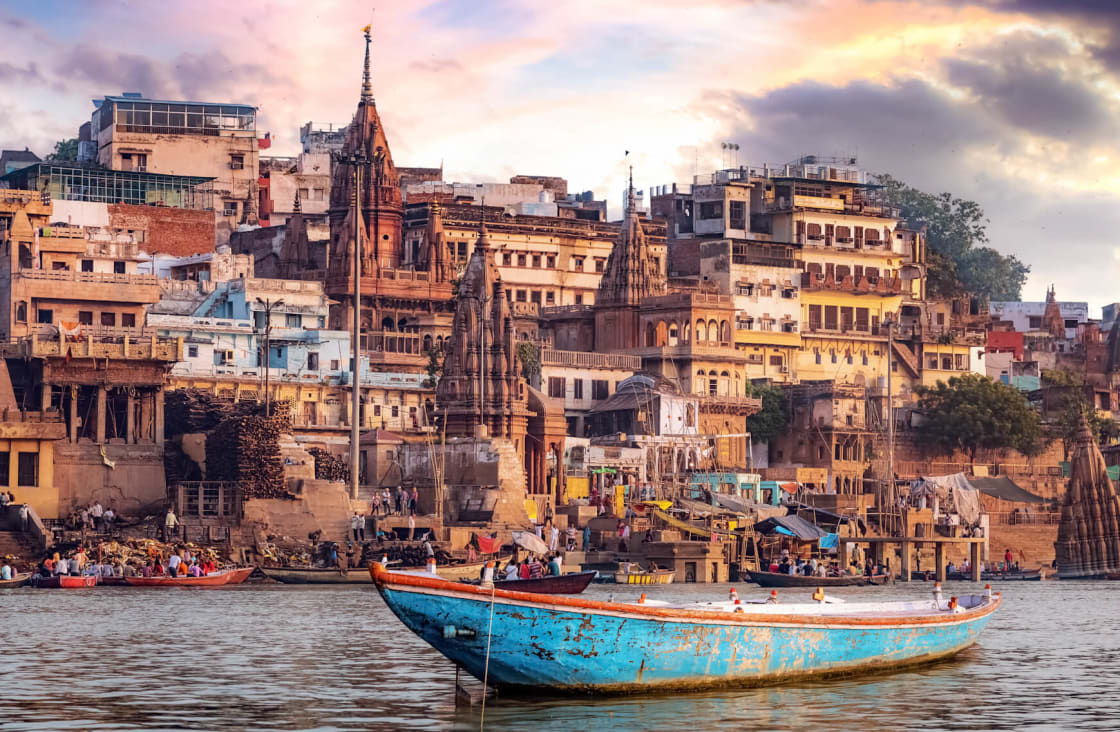
Varanasi’s Manikarnika Ghat on the banks of the Ganges is the principal and most auspicious place for Hindus to be cremated.
Manikarnika, the main and oldest riverfront burning ghat in Varanasi, is the most auspicious place for a Hindu to be cremated. Mentioned in many ancient scriptures and religious texts, it is said to be the place where Devi Sati set herself on fire and also the birthplace of the fearless queen of Jhansi, Rani Lakshmibai. Temples of many Hindu deities surround the ghat’s periphery while the holy waters of the Ganges flow peacefully alongside.
A holy well, believed to have been dug by Lord Shiva to recover the fallen earring of Goddess Sati, is present at the top of the stairs. Dead bodies are handled by outcasts known as doms and are carried through the alleyways of the old town to the holy Ganges on bamboo stretchers, swathed in cloth. The corpse is doused in the Ganges prior to cremation.
Huge piles of firewood are stacked along the top of the ghat; every log is carefully weighed on giant scales so that the price of cremation can be calculated. Each type of wood has its own price, sandalwood being the most expensive. There is an art to using just enough wood to completely incinerate a corpse.

While Rainforest Cruises aim to provide accurate and up-to-date information, we make no representations as to the accuracy or completeness of any information herein or found by following any link on this site. Rainforest Cruises cannot and will not accept responsibility for any omissions or inaccuracies, or for any consequences arising therefrom, including any losses, injuries, or damages resulting from the display or use of this information.




